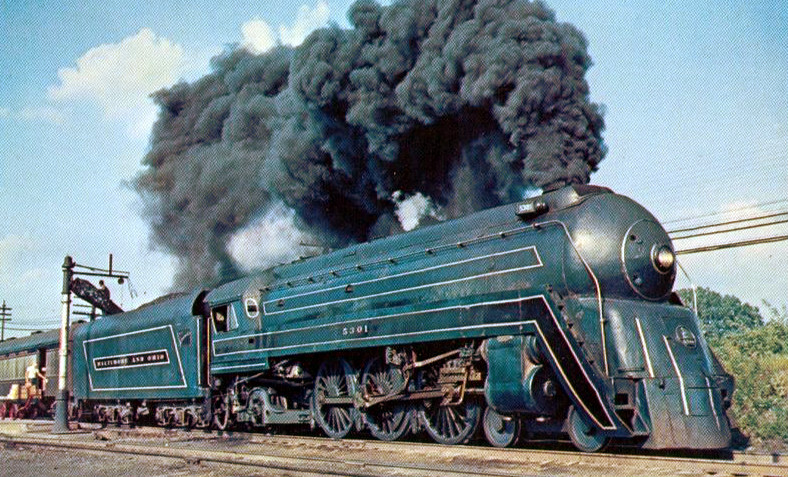The expanded coal bunker gives the NKP 765’s tender a “Norfolk & Western-ish” look. Perhaps this is a glimpse into what might have been had mainline steam lasted on N&W and NKP through 1970 or so.
From the 765 app, via twitter feed on it, the extended bunkers are to allow longer trips, without the need of a diesel assit unit.
If it works, I’m all for it.
That expanded coal bunker may be practical but it is too tall for the locomotive! For me it spoils the classical look of what was an exceptionally well proportioned original design. Sorry for the negative tone!
I am surmising that if steam was still alive in 1964 when N&W took over the NKP, an expanded coal bunker might also have been accompanied by an expanded (raised) water compartment as had been done on many of the original tenders for some classes of N&W steam power. If you look at the construction of 611’s tender and coal bunker, there are similarities to the expanded coal bunker of 765.
Mr. Jensen’s GTW 5629 had a very large tender applied, almost larger than the locomotive, and if I recall correctly, some classes of NYC Hudsons and some M1 Pennsy Mountains had tenders applied that were longer than the locomotive itself. In this instance, though, if the added coal capacity allows 765 to run unencumbered and rack up more unassisted ton-miles of service, just one opinion, it is a small price to pay. After all, to borrow a phrase from The Boss, Bruce Springsteen, 765 was born to run!
On first look, I was not exactly thrilled with the looks. But, after seeing her in person, I think it looks OK, better than my first look from a picture on the net.
You have to admit, though, that it is A LOT better than having to use a diesel to stretch the coal on long runs. After all, this is 2015, and you have to do the right thing to “fit in” on the railroads. If it means a removable coal bunker extender, then so be it.
The only other option is to throw a ton of money at it and make a more permanent change, like Ross did with the 614’s tender. Again, that is not how 614 tender looked as built, but it was necessary for her to operate like she did.
FWRHS did the right thing!
if this goes on they’ll install a daisy chain channel thru all them coal hoppers, add some water tanks behind and they can run non stop coast to coast and back…8-D
Of interest might be to show a couple of photos of PRR " Long Distance Tenders" ( occasional referred to as ‘Coast to Coast’ (?)
a later version @ http://www.northeast.railfan.net/images/tr_prr999401.jpg
and this: applied to a Pennsy K-4 in the 1930’s
That is a unique setup for a K4! It looks pretty good, actually! One wonders if it was used in a run for the Pennsy west end where the distances stretched out, such as Indy to St. Louis perhaps?
It made me think of the huge tenders on those late-model Omaha Road Pacifics - pretty big and sort of “Norfolk & Westernish” with the high coal bunker and tall water tank.
http://kohlin.com/omaha/cstpm&o602.jpg
But I think that Pennsy job just might have the Omaha Road unit beat capacity-wise!
That Omaha Road tender looks like it was borrowed from an H-1. I was surprised that the Coast-to-Coast tender looked pretty good with a K-4.
The tenders used with the B&O’s Cincinnatian streamlined engines were configured for 25 tons of coal and 20,000 gallons of water

Wow! The streamlining is deceptive. 20,000 gallons of water, if I recall correctly, is the same water capacity as ATSF 2-10-4 Madame Queen and probably as much or more coal (prior to 5000’s conversion to oil firing). That streamlining conceals the brawn beneath! The boys at Mt. Clare done good! Thanks for the great photo, too!